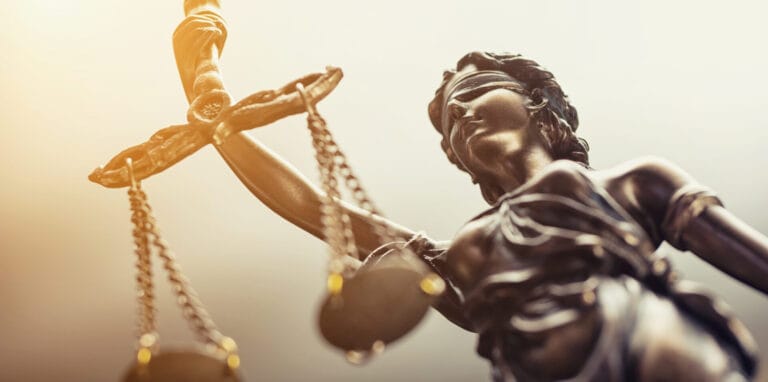As an attorney, you have a responsibility to protect your client’s interests in defensible discovery. While you don’t have to be an expert in the technicalities of eDiscovery, it’s essential to understand the importance of working with someone who does have specialist knowledge of defensible collection practices and can comply with the necessary requirements.
More and more, judges are holding attorneys accountable for their collections process and expect cooperation throughout discovery. This means that your team and the opposing counsel need the eDiscovery tools, intelligence, and facts in order to support discovery parameters that are proportional to your case.
Drawbacks of Not Collecting Defensibly
When you make the mistake of not collecting data defensibly, your attention gets pulled from your case and towards defending your procedure. Unfortunately, this effort can almost become another case in itself.
How do you know you have not performed a defensible collection? In the best of scenarios, your opposing counsel might present evidence that you are not familiar with, causing you to reexamine your collection process. If this happens early during discovery, you can submit a second request for evidence and work with your eDiscovery vendor to adjust the collection procedure.
However, if collection mistakes are caught after discovery is finished or even during trial, the consequences become much more serious. In the process of evaluating what went wrong in your collections process, you may have to hire additional eDiscovery experts to act as neutral investigators. You can face sanctions, monetary penalties, months of unexpected delays to your case. You are also at risk of looking malicious to the judge and jury, who do not know whether the collections error was genuine, or whether you were intentionally misrepresenting evidence. All of this can place you at risk of losing your case, or the judge declaring a mistrial.
What Does Defensible Collection Look Like?
You’ll want to be fully aware of your client’s retention policy and data infrastructure by interviewing their key players involved in not only the matter itself, but also any technical personnel that might administer data storage systems so that all sources of potentially relevant data can be identified and ultimately collected from, if necessary. It’s also recommended that you monitor your legal hold compliance to ensure that all potential custodians have been made aware of agreed to their obligations as it relates to preserving those sources of potentially discoverable information. Throughout the collection process you’ll want to ensure that all metadata is preserved and accurately collected for all of the files and data gathered. This can be achieved through a standard collection (rather than forensic) if you use the proper mechanisms to export the data rather than simply forwarding data, such as an email or a text message.
Some file types like cell phone messaging apps, cloud services, and social media postings require a more nuanced collection approach than more standard email or hard drive collection. You can work with a collection specialist or eDiscovery expert, who will know the best practices for each type of data source. For example, with cell phones the type of phone, operating system, and owner’s data management practices will all affect how you collect and preserve data from that device, and if it’s even possible. If the owner regularly backs their phone up to a cloud service, the collection may be done remotely and swiftly. Otherwise, you may need to do a physical collection. Many smartphone users now have messaging apps that encrypt their data, which can be particularly complicated to collect.
As you go through the collection process, it is important to protect the data you collect from intentional or accidental changes and preserve it for eventual use in your case. Defensible collection of computer files can involve using hash values, which are unique identifiers that correspond to a file’s contents. During eDiscovery, we can compare hash values before and after collection to check that a file has remained the same. If a file is defensibly collected and processed, this information will not change even if the file name has been modified. This prevents file duplication, which can save time and money during the review process, and most importantly, it maintains the integrity of data by exposing any attempts to manipulate it.
Who should do the collection? Each case will be unique, but it is always safest to work with a trusted eDiscovery expert who can tailor a bespoke approach. However, many clients prefer to have their IT department do the collection, and this can be defensible if executed carefully. You should still consider hiring an expert who can advise your client’s IT team to ensure they do the collection correctly and defensibly. The systems required for proper collection are unique and an eDiscovery vendor will be able to advise on the best way to conduct a proper search. For example, search terms need to be just right so that you don’t collect too much, but you do gather what will be relevant. This can involve customizing keywords to include alternative spellings, nicknames, etc. Each case is going to be a little different, which is why it helps to consult with experts.
As the data transitions from its original source to the collection destination, it is advisable to maintain clear documentation in the chain of custody. Whether you do this through workflow technologies or simple spreadsheets, you’ll want to identify individuals on your team who will be responsible and accountable for managing a record of where your data has been. As a best practice, you can ask your eDiscovery vendor to take you through their chain-of-custody documentation and the reports they use to track data through the collections process.
While a defensible eDiscovery process requires an investment in time and resources, it’s a responsibility that should be taken seriously now that courts are less tolerant of reckless collection practices. In order to protect yourself and your client’s interests, it’s always best to start with a defensible collection.






